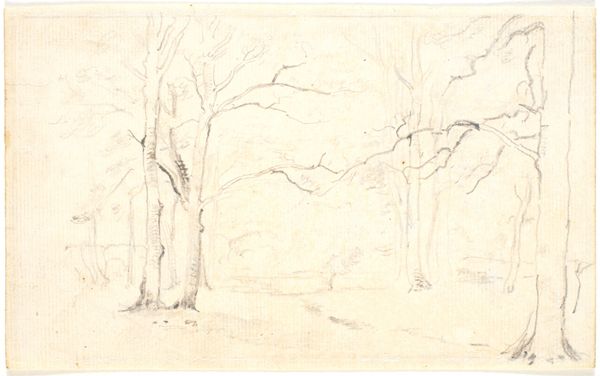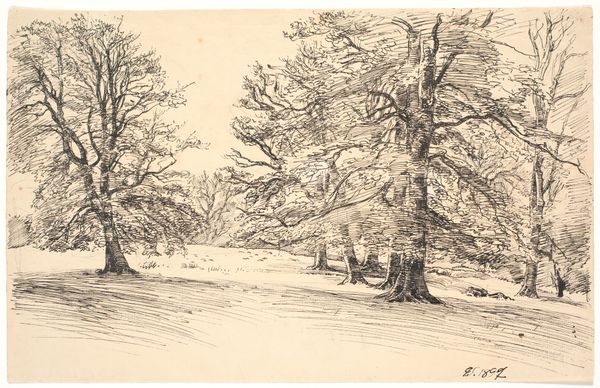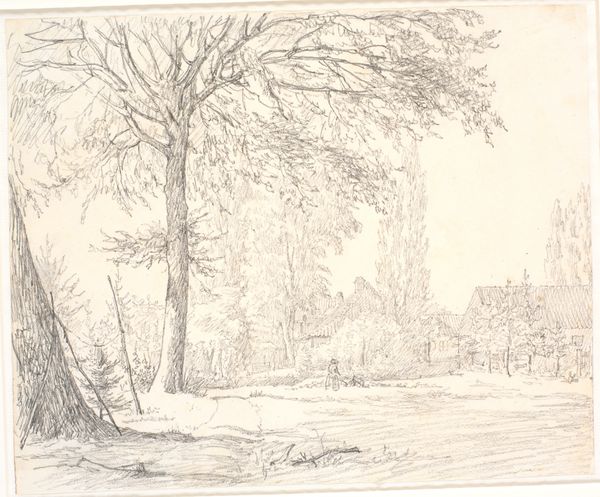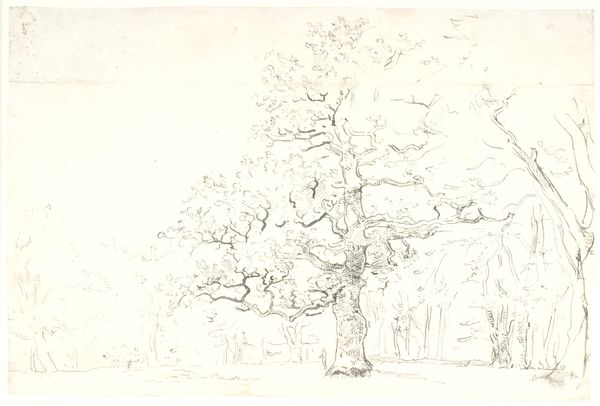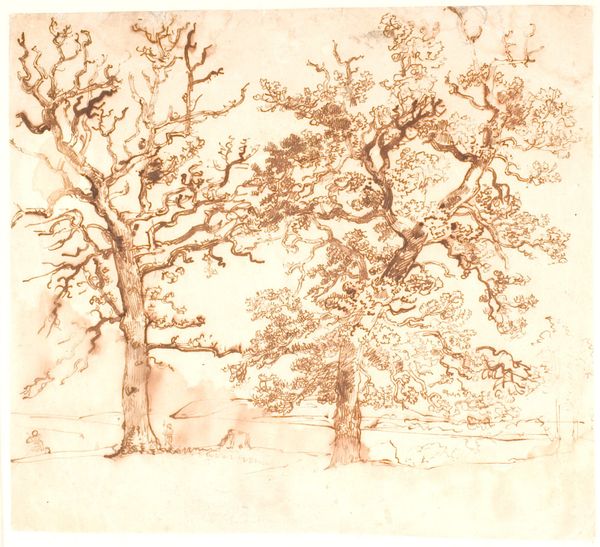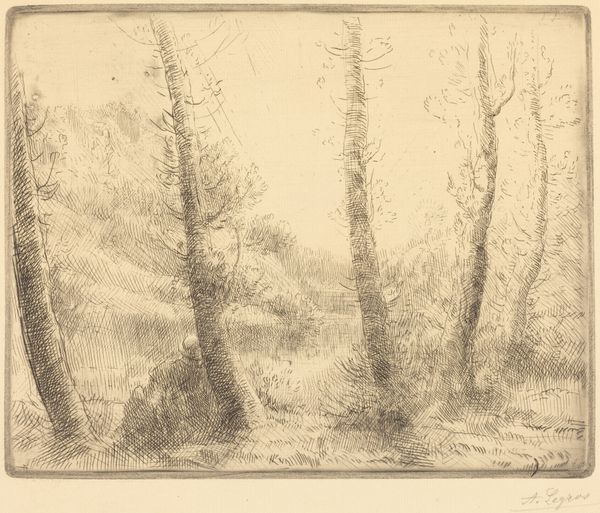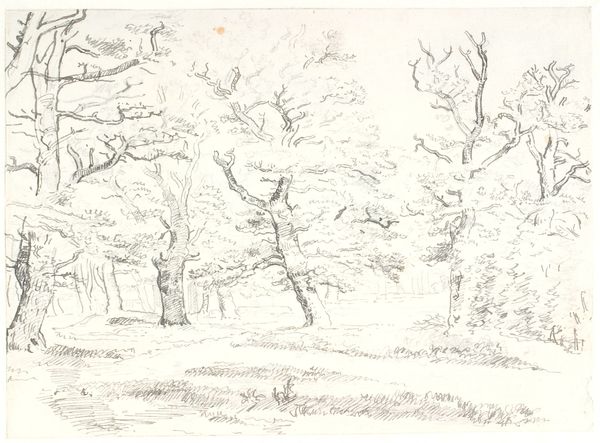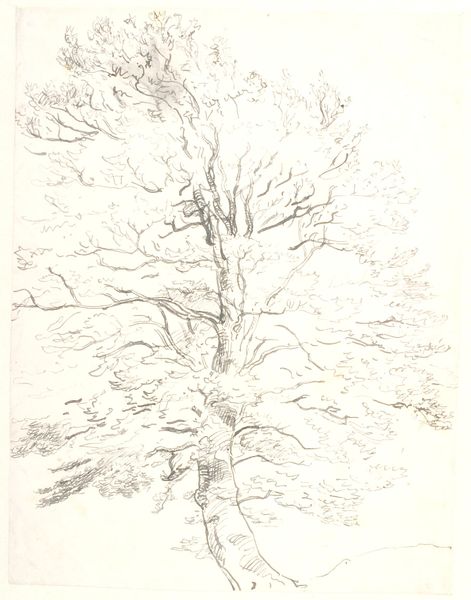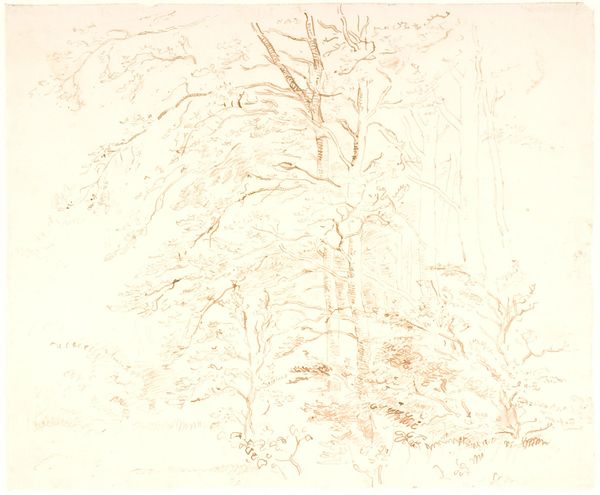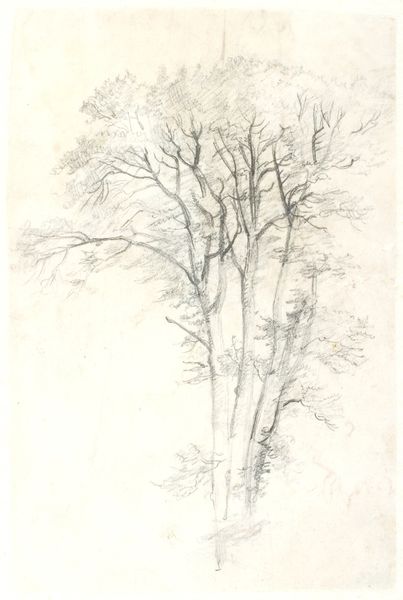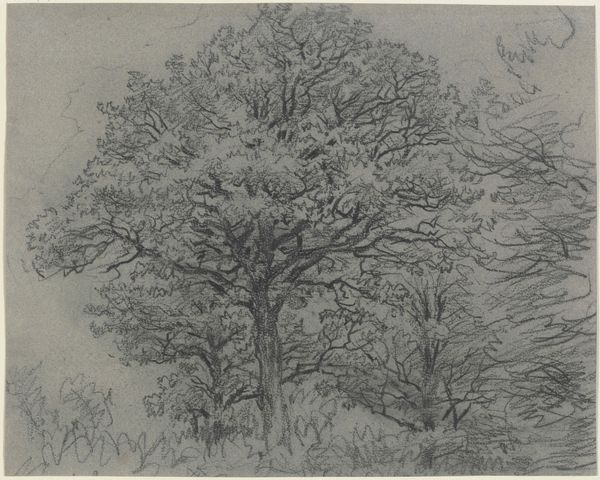
Udsigt over et landskab, i forgrunden store bøgetræer 1840 - 1843
0:00
0:00
drawing, pencil
#
drawing
#
landscape
#
etching
#
romanticism
#
pencil
Dimensions: 207 mm (height) x 280 mm (width) (bladmaal)
Curator: Dankvart Dreyer crafted this pencil drawing, "Udsigt over et landskab, i forgrunden store bøgetræer" sometime between 1840 and 1843. It translates to "View of a Landscape, in the foreground large beech trees." Editor: My first impression is how ethereal it feels. The thin pencil lines create a delicate scene. Curator: Exactly. Let's consider Dreyer's positioning within the context of 19th-century Danish art and Romanticism. We see nature depicted, yes, but I want to emphasize how artists during this time, and Dreyer himself, navigated questions about Danish identity. His landscapes served to strengthen patriotic feelings and ideas about national identity and collective pride during times of significant political change. How can that history be applied in contemporary conversations about gendered power? Editor: That's an interesting connection. Thinking about power, I am reminded of ecological awareness now versus then. His light, airy strokes feel a little disconnected. Do we feel that romanticizing nature has given way to perhaps a new relationship with nature due to awareness and knowledge gained? How might our vision shift if the scene focused not on the beautiful trees, but on the labor involved in managing these forests? Curator: The drawing depicts the beauty of the beech trees, symbols of the Danish landscape, as something worth safeguarding. However, in terms of technique, it has to be acknowledged that this light etching doesn't fully grapple with the complexities inherent in these social or cultural constructs. Still, even if the statement isn’t overt, it makes us consider our current relationships with these spaces and practices. Editor: So while not explicitly challenging existing power structures of land ownership and access, the mere inclusion of this scene in public discourse potentially begins an implicit conversation around who belongs to this image. The existence of that discourse begins something new. Curator: Precisely, making art is always an intervention, no matter how subtle, in societal norms. Editor: Ultimately, the artwork invites us to contemplate our relationship with nature and raises crucial questions about representation, ownership, and responsibility within the natural world. Curator: A powerful, relevant sentiment that offers pathways for further engagement.
Comments
No comments
Be the first to comment and join the conversation on the ultimate creative platform.

